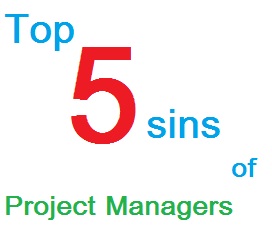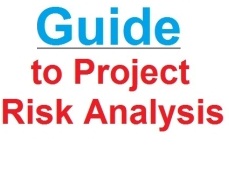ERP Warning Signals, or Why Companies Fail with Their Solutions
 Today most business organizations that use Enterprise Resources Planning (ERP) solutions look for way to increase their efficiency and performance. Although ERP in its essence means a better way to reach these mission-critical goals, the real situation proves that not all of the systems available ion the market really simplify and accelerate business operations for a sustainable competitive advantage.
Today most business organizations that use Enterprise Resources Planning (ERP) solutions look for way to increase their efficiency and performance. Although ERP in its essence means a better way to reach these mission-critical goals, the real situation proves that not all of the systems available ion the market really simplify and accelerate business operations for a sustainable competitive advantage.
ERP warning signals are those sings that help the organizations figure out whether their solutions are worthy or not. In this publication we talk about the top-7 warning signals. The purpose is to describe why an ERP solution may be rather harmful than useful to a scaled business environment.
Top 7 Warnings
Data Integration: failing with integrating strategic business data
The very first warning sign is that an outdated ERP system fails to ensure the integration of the mission-critical business data with decisions. It actually means using the ERP solution the organization cannot analyze the business environment and retrieve critical information necessary for effective decision making.As a result, project management, quality control, engineering, custom orders, electronic data interchange (EDI), HR, and release accounting all together reside in an information vacuum, in which there is no dependency between the mission-critical elements of the business environment.
Worse yet, this information vacuum increases complexity of the environment and ensures duplication of efforts with different scenarios of the real situation. Enterprise Resource Planning creates a more complicated environment in which the quality, reliability and accessibility of vital business information are neglected.
Changes: more costs and time spent on system updates
Any software product needs to be updated and modified regularly, with certain costs involved. Today ERP software vendors provide releases every 1-2 years; they rather rarely provide the new options and features the business organizations really need for. Plenty of ERP feature requests come to the vendors but few of the needed features are really developed and implemented.A customized solution seems to be a great way to solve this issue. But this way requires more money from the business organizations; besides it is time-consuming. Moreover, it is hard to find skilled and competent resources that could do necessary changes to the ERP system at an affordable rate and within a shorter period. As a result, the companies have to use their outdated software products.
Business Continuity: the recovery takes much cost and time
Any business operates at a certain portion of uncertainty that jeopardizes the existence and success of the business.A combination of continuity planning and effective enterprise resource planning system ensures that a disrupted business activity will be restored sooner and with less cost. But if the system cannot provide a quick, safe and reliable recovery of business data after the disaster or break, then this solution appears to be failing and inefficient.
If the recovery takes more time and money, then it actually means the system does not allow efficiently avoiding unacceptable consequences associated with a disruption in business continuity. The result is that the company loses more valued data while consuming more time to recover what still remains recoverable.
Maintenance fee: IT expenditures are getting higher
Some of the leading ERP vendors tend to consistently raise maintenance fees, which in terms increases the IT expenditures of business organizations. The cost an organization pays for the maintenance service appears to be too high over time, so the organization has to dedicate more monetary resources to technical support and maintenance.This tendency is not good but it exists. For example, SAP (sap.com) recently increased the annual maintenance fee from 16% to 22%. An organization that uses SAP ERP system has to raise its IT spending, considering the maintenance fee increase and also multiple third-party contracts for administering and supporting related systems.
Remote Access: no way to manage ERP data while traveling
Today many people need to have remote access to their systems and tools left at their offices. Businessmen need to have virtual access while being on a business trip or just traveling. Blackberries, iPhones, Android-based smart phones, laptops, nettops, pocket PCs are those tools that help people stay in touch with their workplaces.In combination with wireless connectivity those tools provide us a great opportunity for virtual collaboration and data exchange. If an ERP solution fails to establish remote connection via Internet and with use of mobile technologies and devices, then this system is inefficient and outdated indeed. It’s a very sound warning signal.
Partner Collaboration: lack of easiness in access
The collaboration with partners is of high importance (especially in the manufacturing sector) because just-in-time replenishment and procurement drive success of business operations at higher levels. ERP software should provide suppliers, vendors and other partners with easy and quick access to inventories and orders.Ideally the partners will use an online ERP solution that easily provides the information they need. The solution does not require any local installation. It should have user-friendly interface and powerful functionality. If all these features are unavailable or poorly implemented, then the warning signal will sound very loudly!
Employee Training: spending more resources on learning the system
Most of the elder enterprise resource planning solutions and legacy systems are difficult to understand, and both existing and new employees have to spend more time and effort to learn those systems.The complexity of the ERP solutions causes higher staff turnover rates. Besides, the companies have to invest more money in employee training and orientation. This warning signal means the company suffers from the inefficient use of limited resources.
So What to Do Next?
The idea behind this article is to describe the warnings that reveal an inefficient ERP solution. If at least one of the signals rings within your business environment, then do your best to find another alternative system that does not fail your business. But how to make the right choice?
Below we give a list of suggestions to help you find and choose the right solution for the effective planning of business resources:
- Search for Software as a Service (SaaS) ERP
- Focus on Manufacturing Execution Systems (MES) rather than on ERP if you do your business in the manufacturing sector, and vice-versa
- Look for such critical features as production, sales, scheduling, project management, tooling, quality management, engineering & design, bar coding, delivery control, warranty audit, EDI, HR, others
- Check if your company is ready to cover the maintenance fee, including third-party support contracts
- Be sure the system provides powerful data back-up and disaster recovery options
- Check if the system supports mobile remote access to the database
- Be sure the solution provides the functionality for partner collaboration
- Estimate time and cost required for orientating and instructing your workers in correct use of the system; then be certain the estimate is affordable for your business.














